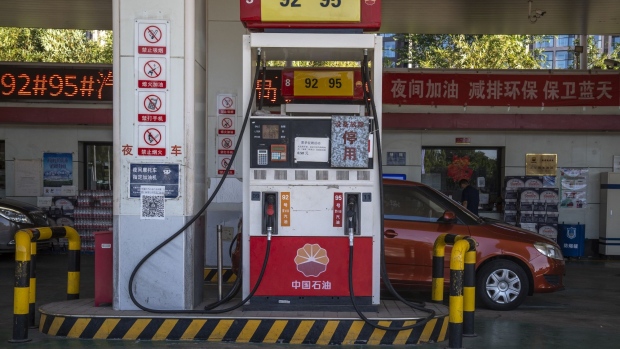Dec 15, 2022
Chinese Oil Demand Faces Bumpy Road to Recovery as Covid Curbs Ease
, Bloomberg News

(Bloomberg) -- Oil demand in China is expected to pick up as the world’s largest crude importer pivots away from its strict Covid Zero policy, although analysts caution that it may take time for gains to kick in.
Energy Aspects Ltd. boosted its first-quarter outlook by 260,000 barrels a day, according to a Dec. 12 note from analysts including Jianan Sun. The revision centers on gasoline and jet fuel as mobility increases, with the latter expected to rise to about 750,000 barrels a day from a low base of 450,000 barrels.
Increased energy consumption in Asia’s biggest economy following the abrupt shift in policy may help to support futures prices that are on course for a back-to-back quarterly drop, with global benchmark Brent well down from the peak seen after Russia’s invasion of Ukraine. Nevertheless, a potential surge in infections in China as curbs are lifted could make for near-term disruption.
“People’s will to go out may still be conservative in the next one or two months as most cities have yet to see big outbreaks,” Zhang Xiao, an analyst at OilChem, told a webinar, adding that gasoline usage may actually drop near term as people opt to stay home to avoid infection or to recover “The market will wait at least till March to see a recovery in gasoline demand.”
China’s shift comes at a complex time in energy markets. The Organization of Petroleum Exporting Countries and its allies recently opted to slash supply as global growth slows, traders are tracking the impact of the Group of Seven’s price cap on Russian oil exports, and central banks are still battling inflation.
IEA Outlook
The International Energy Agency, which advises major economies, bolstered its forecasts for global demand in 2023 by 300,000 barrels a day, citing factors including surprising resilience in China. Usage will grow by 1.7 million barrels a day next year to average 101.6 million a day, it said in a report this week.
There’s also guarded optimism from Vitol Group, the world’s biggest independent oil trader. Demand in China may recover as early as the second quarter, according to Mike Muller, head of Asia, who said this week there will probably be a “Nike-swoosh or J-shaped” rebound in transport-fuel usage
Some high-frequency data already points to an improvement. Congestion levels on Thursday morning in Urumqi, where months of lockdown devastated mobility, was 5% higher on-year, data from Baidu Inc. showed. In the southern metropolis of Guangzhou, the on-year decline has narrowed.
Separately, the number of trucks running on the nation’s highways rose to 7.62 million on Wednesday, 7% higher than a month ago, according to Ministry of Transport data. Domestic flights operated by China Eastern Airlines Corp. — one the country’s leading carriers — rose to 1,379 on Dec. 12, more than double the figure on Dec. 1, the China Aviation Daily has reported.
Jet-fuel demand will probably be 50% higher in December, up from a previous estimate for a 15% increase, according to Mia Geng at FGE. “The current strength in flight and bookings is largely driven by pent-up demand,” Geng said. “But this will not be sustained if cases continue to rise.”
--With assistance from Leen Al-Rashdan.
(Adds Vitol’s outlook in seventh paragraph.)
©2022 Bloomberg L.P.





